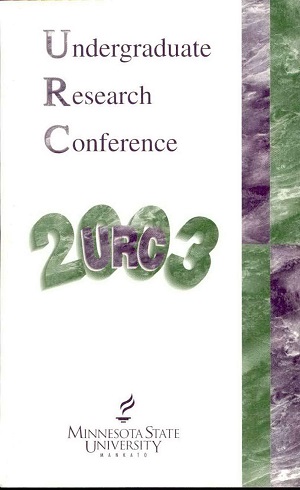Expression of Rat Aortic Fibronectin mRNA Isoforms as a Function of Gender and Maternal Exercise
Location
CSU
Student's Major
Biological Sciences
Student's College
Science, Engineering and Technology
Mentor's Name
Theresa Salerno
Mentor's Department
Biological Sciences
Mentor's College
Science, Engineering and Technology
Description
This study evaluates fibronectin levels in individual rats and examines any significant differences in total fibronectin and individual isoforms, A and B, in male versus female offspring of exercised versus non-exercised mothers. Fibronectin is a large glycoprotein that plays an important role in cellular processes, including cell adhesion, differentiation and migration, and wound healing. Several isoforms of fibronectin are produced from a single gene through alternative mRNA splicing at different positions. Protein domains EIIIA and EIIIB are each encoded by single exons, referred to as A and B. Levels of mRNA for A-f- and A- and B-i- and B- isoforms were measured in rat aorta using semi-quantitative RT-PCR (reverse transcriptase-polymerase chain reaction) analysis. Rat aorta tissue was dissected, cleaned in a buffered solution, and frozen immediately in liquid nitrogen. RNA was isolated and amplified by RT-PCR, and analyzed by gel electrophoresis and densitometry.
Expression of Rat Aortic Fibronectin mRNA Isoforms as a Function of Gender and Maternal Exercise
CSU
This study evaluates fibronectin levels in individual rats and examines any significant differences in total fibronectin and individual isoforms, A and B, in male versus female offspring of exercised versus non-exercised mothers. Fibronectin is a large glycoprotein that plays an important role in cellular processes, including cell adhesion, differentiation and migration, and wound healing. Several isoforms of fibronectin are produced from a single gene through alternative mRNA splicing at different positions. Protein domains EIIIA and EIIIB are each encoded by single exons, referred to as A and B. Levels of mRNA for A-f- and A- and B-i- and B- isoforms were measured in rat aorta using semi-quantitative RT-PCR (reverse transcriptase-polymerase chain reaction) analysis. Rat aorta tissue was dissected, cleaned in a buffered solution, and frozen immediately in liquid nitrogen. RNA was isolated and amplified by RT-PCR, and analyzed by gel electrophoresis and densitometry.



